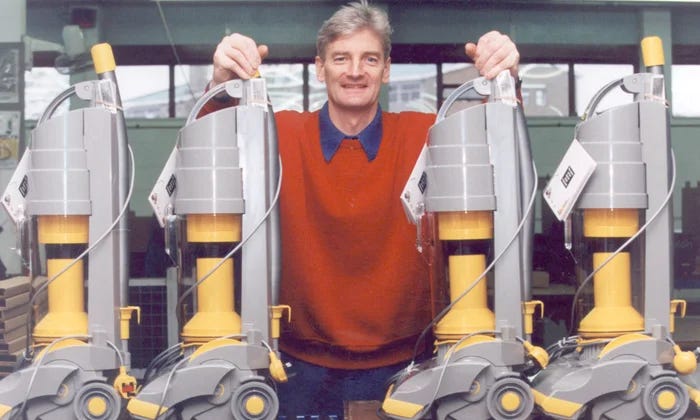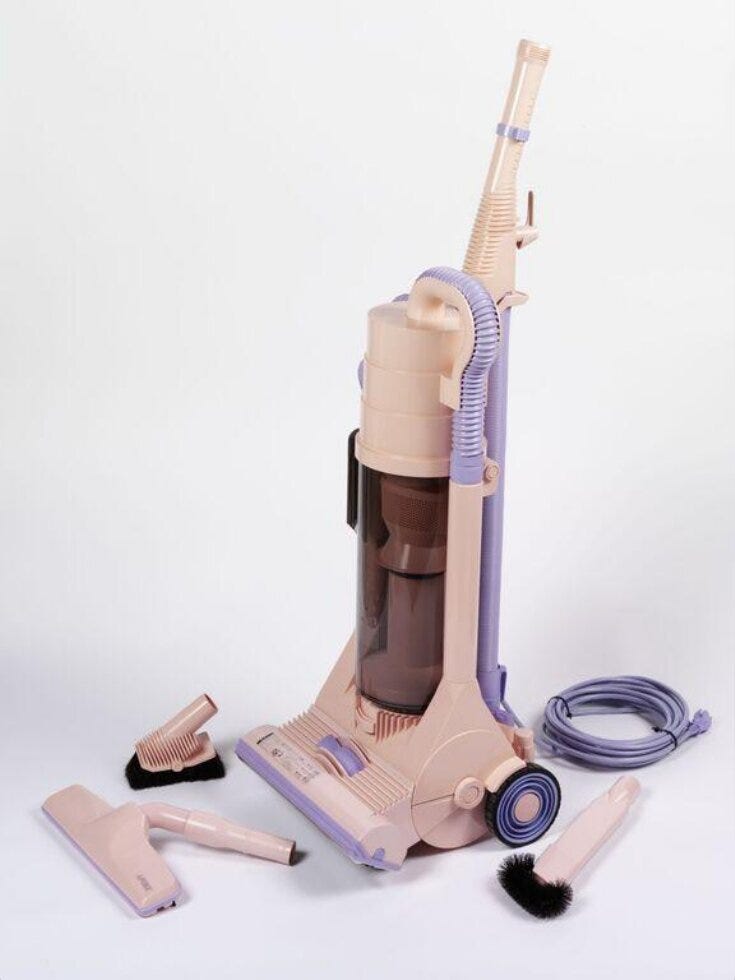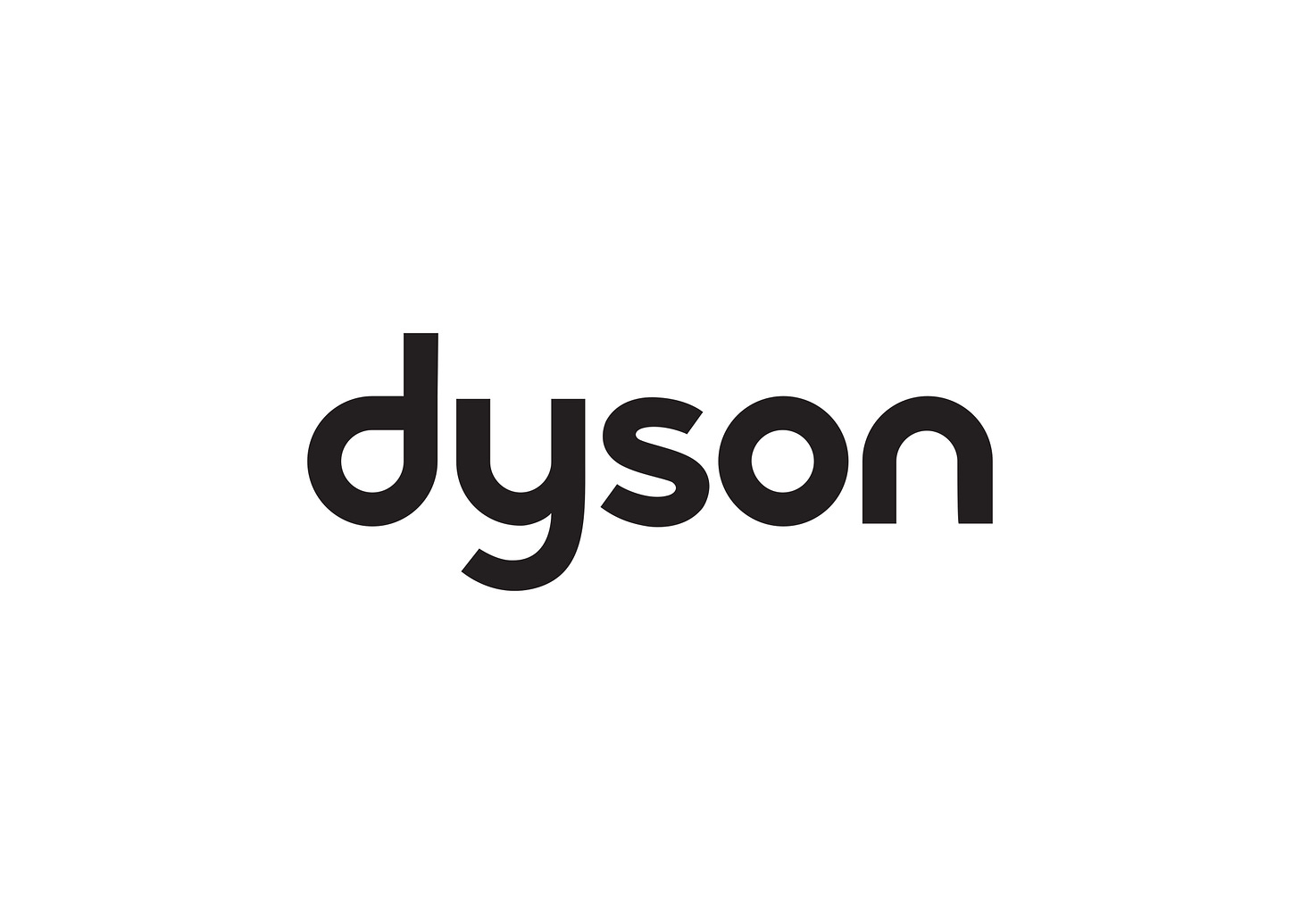The Man Who Failed 5,126 Times Before Making Millions
How James Dyson Turned His Worst Vacuum into the Best Business Idea Ever
“Sometimes the most successful people are just the ones who refuse to quit”
Back in 1978, James Dyson bought what he thought was a decent vacuum cleaner. You know the feeling when you spend good money on something, and it turns out to be garbage? That's exactly what happened to him.
He was fixing up an old cottage and needed something reliable. The Hoover Junior (a popular British vacuum cleaner brand from the 1970s) seemed perfect until he actually used it. After a few minutes of cleaning, the thing basically stopped working. The bag would fill up with dust, clog up, and boom no more suction.
Most of us would probably just deal with it, right? Maybe buy a new bag, curse a little, and move on. Not James Dyson. This guy took the whole thing apart to see what was going wrong.
The Lightbulb Moment
Here's where it gets interesting. Dyson had been working with these big industrial machines that used spinning air to separate stuff kind of like a tornado in a can. Paint particles would get spun to the outside while clean air stayed in the middle. No filters needed.
Staring at his broken vacuum, he thought: "What if I could do this with house dust?"
Sounds simple, but that one question was about to eat up the next 15 years of his life.
Living in a Shed (Literally)
Dyson set up shop in a shed behind his house. Not glamorous, but it's where the magic happened. Every single day for four years, he'd go out there and build another prototype. Cardboard, duct tape, whatever he could find.
Build one. Test it. Watch it fail. Figure out why. Try again tomorrow.
His neighbors probably thought he'd lost his mind. His wife definitely wondered what she'd gotten herself into. But Dyson was hooked on solving this puzzle.
"I'd get up excited every morning," he said later. "Even though I knew it probably wouldn't work, there was always that chance it might."
5,126 Ways It Doesn't Work
Four years. 5,126 attempts. Think about that for a second. That's more than three prototypes every single day for over 1,400 days straight.
Most people would have given up after the first few dozen failures. Dyson kept going because each failure taught him something new. This angle didn't work because the airflow was wrong. That design failed because the particles were too small. Each broken prototype was like a lesson in physics.
Then, in 1983, something great happened. Prototype number 5,127 actually worked. The cyclone spun perfectly, the suction stayed strong, and no bag was needed.
After 15 years of obsession, James Dyson had cracked the code.
Nobody Wanted It
You'd think the hard part was over, right? Wrong.
Dyson took his working prototype to every major vacuum company he could find. Hoover (the dominant vacuum brand in Europe), Electrolux (a Swedish appliance giant), Black & Decker (famous for power tools) all the big names. Every single one turned him down.
Their reasoning was pretty simple (and pretty smart from a business standpoint): why would they kill their own cash cow? These companies made serious money selling replacement bags. Dyson's invention would basically destroy their most profitable product.
One executive literally told him: "If there was a market for bagless vacuum cleaners, we would have invented it."
Ouch.
Finding Love in Japan
After getting rejected everywhere in Europe and America, Dyson got a call from Japan. A small company called Apex had heard about his invention and wanted to license it. (basically rent his design to make their own version).
In 1986, they launched the G-Force. This wasn't just any vacuum it was hot pink, cost about $2,000, and Japanese customers treated it like a piece of furniture. People would literally put it on their tables when they weren't using it.
The Japanese loved it. Here was this crazy-looking machine that actually worked better than anything else on the market. It even won design awards.
Finally, after years of rejection, someone got it.
Building an Empire From Scratch
The money from Japan gave Dyson something he'd been missing: proof that people actually wanted his product. In 1991, he started his own company and built a factory in England.
In 1993, he launched the DC01 (DC stood for "Dual Cyclone") in the UK. Remember all those companies that had rejected him? Now he was competing directly with them.
The DC01 became the fastest-selling vacuum in British history.
Dyson's story isn't really about vacuum cleaners. It's about what happens when you refuse to accept "that's just how things work."
Every expert told him his idea was wrong. Every manufacturer said there wasn't a market. Every failure could have been a reason to quit. Instead, he treated each setback as information that brought him closer to the answer.
"I didn't see them as failures," Dyson explained. "Each one taught me something I didn't know before."
Today, Dyson is worth billions. His company makes everything from hair dryers to air purifiers to hand dryers. All because one guy couldn't accept that vacuum cleaners had to suck (pun intended).
The next time someone tells you your idea won't work, remember this: sometimes the biggest innovations come from solving the smallest annoyances. And sometimes the people who say "it can't be done" are the same ones who'll be buying your product five years later.
The best part? Dyson still keeps some of those failed prototypes in his office. Not as reminders of failure, but as proof that every great success story is built on a mountain of "almosts."





